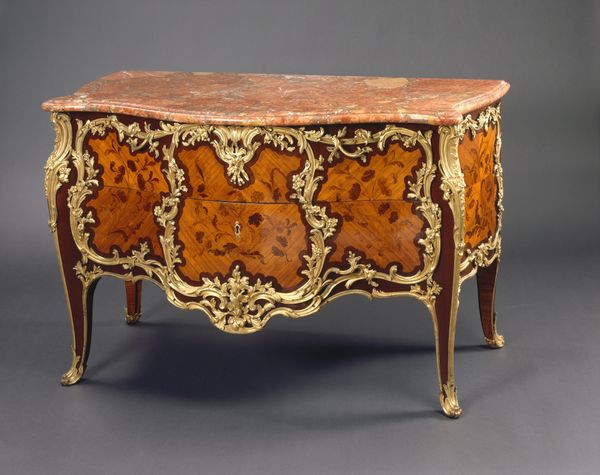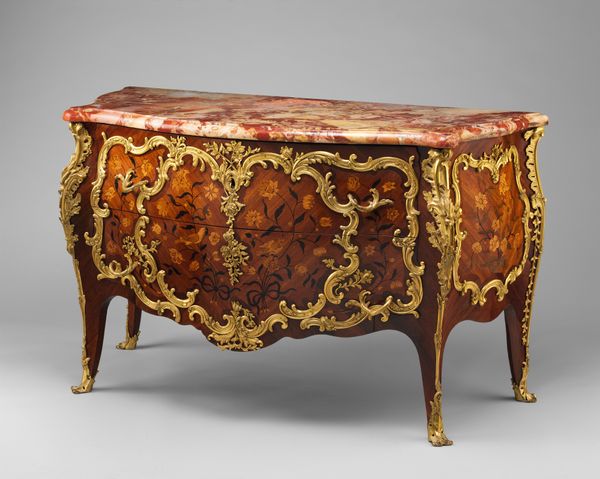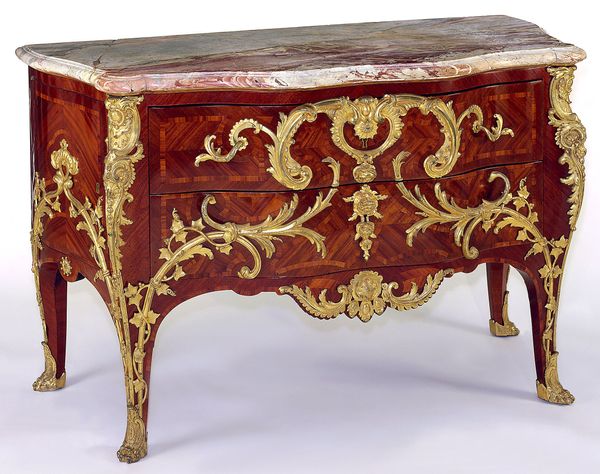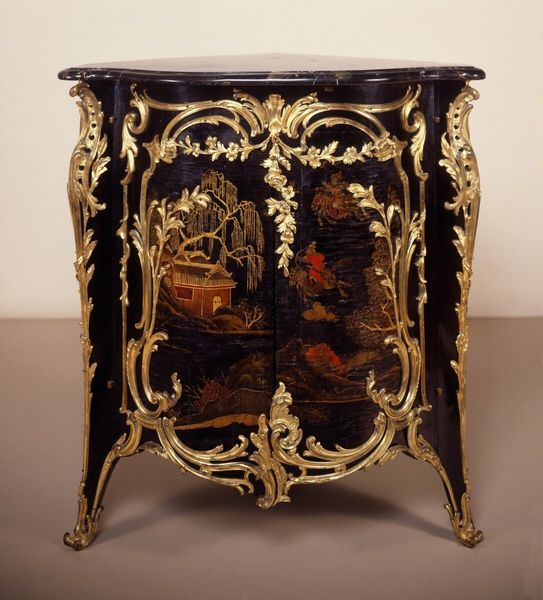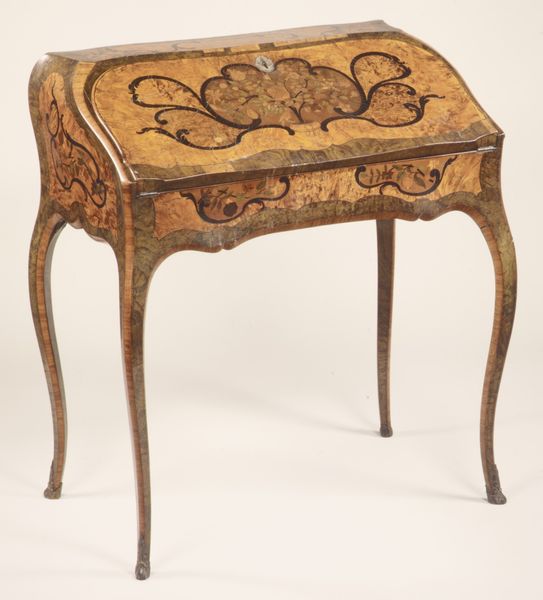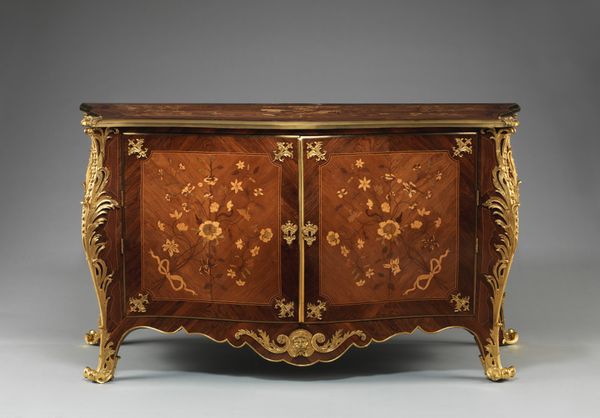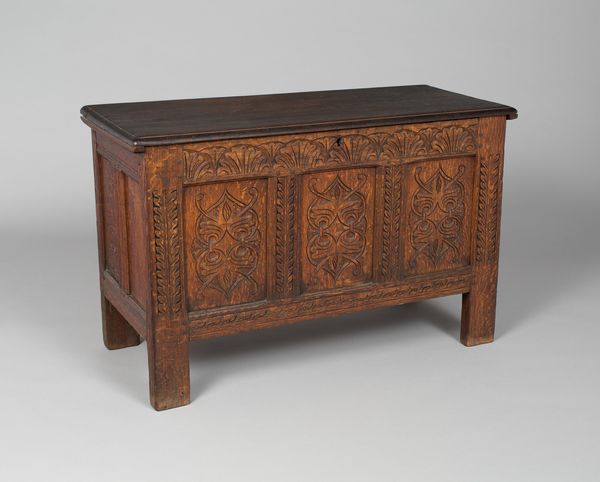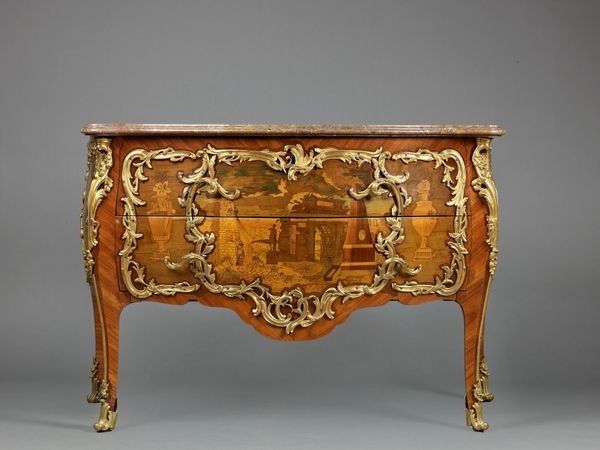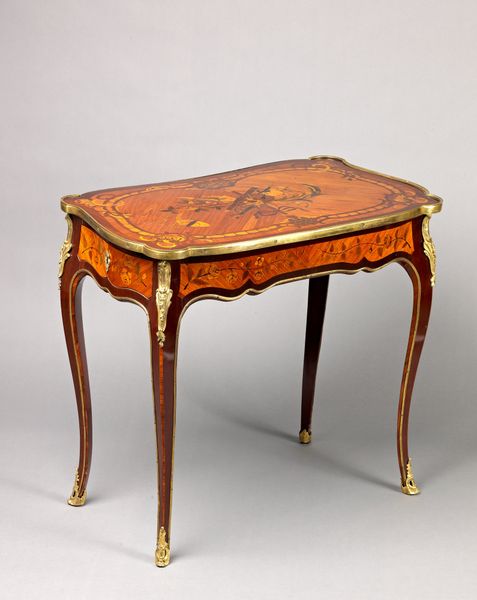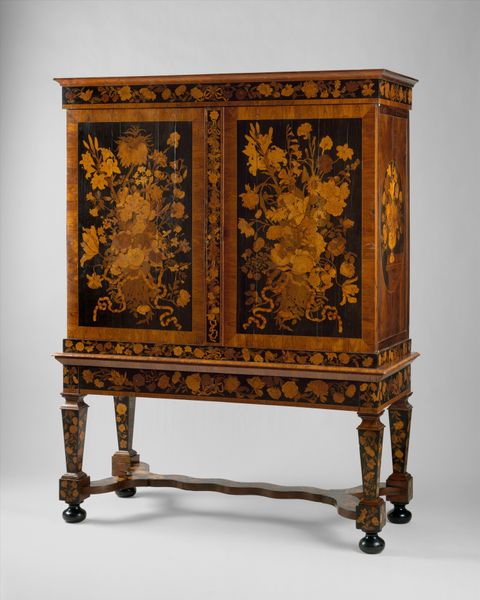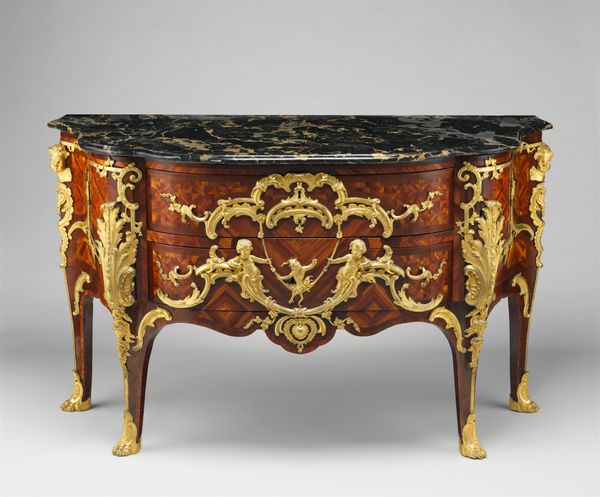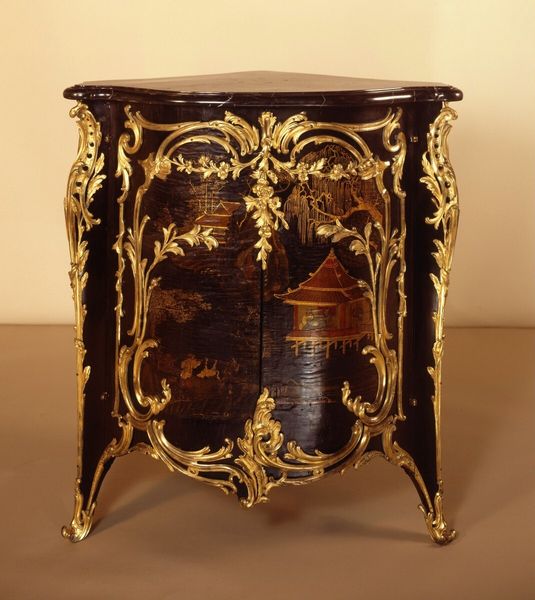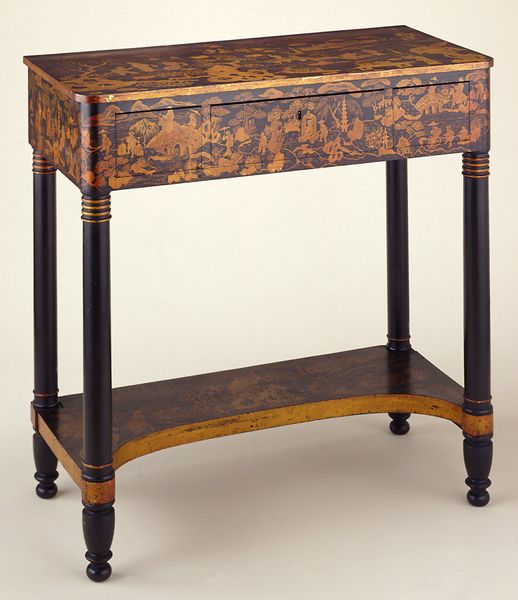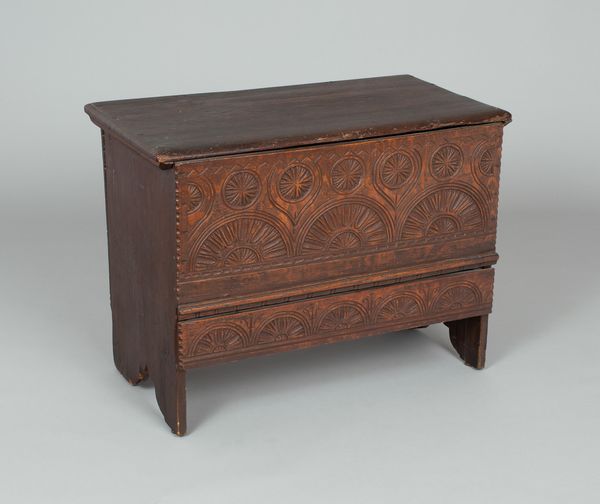
Dimensions: overall: 84 x 124.5 x 57 cm (33 1/16 x 49 x 22 7/16 in.)
Copyright: National Gallery of Art: CC0 1.0
Curator: Just look at this stunning "Chest of Drawers (commode)" created before 1772 by Joseph Baumhauer. The Rococo style is so prevalent in decorative arts. What do you notice first? Editor: Well, I'm immediately struck by the almost overwhelming detail! The combination of what looks like several types of wood, then gilding...It’s incredibly ornate. Curator: Absolutely. It epitomizes the luxury desired by the elite during the mid-18th century. Think about the highly specialized workshops required to produce something like this: cabinetmakers, gilders, bronze workers... a whole network of artisans. The material is everything, and how those people get employed has everything to do with class structures of the era. Editor: I'm drawn to the curvaceous lines of the design, particularly how the gilding enhances that sense of movement. It gives it such a whimsical feel. But it has underlying structure too: observe how the ormolu mounts, arranged organically, seem to support and draw attention to specific wooden components. It really shows that these aren't merely applied as ornamentation. Curator: And the use of imported marble on top isn't accidental. Marble was an assertion of power and influence during this period. The whole construction screams opulence! The drawers themselves must have been expensive too, as functional, essential pieces. I always wonder what kind of workshops Baumhauer relied on for timber. Was the metal casting localized? Did child labor have any impact? Editor: Thinking more about the craftsmanship, notice the patterns in the wood veneer: radiating symmetrically to show careful considerations of visual depth! It gives an added complexity of visual interest against all the gilding detail, that feels like the height of sophisticated artistry. Curator: So much could go wrong! To bring this kind of Rococo object from concept to fruition really demonstrates the power structures at play in pre-revolutionary Europe. And so that gets at larger conversations, for example around the commodification of craftspeople, who essentially become invisible labor behind expensive pieces of material expression. Editor: In terms of the commode as object of study, its details offer a study of its visual expression... a physical embodiment of the aspirations and cultural concerns present during the period! What a fascinating, multi-faceted work of art. Curator: I'll certainly never look at a commode the same way again. Thank you!
Comments
No comments
Be the first to comment and join the conversation on the ultimate creative platform.
